Jenny looked out the kitchen window, hoping to see birds at her new feeder. But she saw only a squirrel. She wondered, “Why aren’t any birds coming?” Her feeder was full of seed, but still, no birds came.
Many people face this problem with their bird feeders. You might have bought the best seed and feeder, but still wait for birds. There could be reasons you haven’t thought of. Think like a bird to understand why they’re not visiting. Making some changes can help attract birds to your feeder.
Key Takeaways
- Ensure your bird feeder is well-stocked with fresh, high-quality seed.
- Choose a quiet, safe location for your feeder to attract more birds.
- Watch out for predators like cats and squirrels that may deter birds from visiting.
- Be patient – it can take several weeks for birds to discover a new feeder in your yard.
- Offer a variety of seed types to cater to the diverse preferences of your backyard birds.
Introduction: The Perplexing Problem
If birds aren’t visiting your feeder, it can be puzzling. It leaves bird lovers feeling let down and looking for answers. It’s important to know what affects bird behavior and how it relates to feeders.
The Disappointment of an Empty Feeder
Seeing an empty bird feeder can be really frustrating. It’s especially tough for those who enjoy watching birds in their backyard. Watching the feeder go untouched day after day can make you wonder why the birds aren’t coming.
The Importance of Understanding Bird Behavior
To fix the problem of an empty feeder, understanding bird behavior is key. Things like the season, weather, how much natural food is around, and predators can affect if birds visit your feeder. Knowing these things helps you make changes to attract more birds.
“Birds are a miracle because they prove to us there is a finer, simpler state of being which we may strive to attain.” – Douglas Coupland
Fresh Seed Matters
One key reason birds may not visit your feeder is the freshness of the bird seed. Bird seed, like any food, can spoil and lose its appeal or even become harmful to birds. It’s vital to keep your feeder with fresh, high-quality bird seed to draw and keep a healthy bird population in your yard.
The Shelf Life of Bird Seed
Each type of bird seed has its own shelf life. Sunflower seeds can stay fresh for up to 6 months if stored right. On the other hand, nyjer seed might only last 2-3 months before it spoil or becomes moldy. Knowing how long your bird seed lasts is key to keeping a steady supply of appealing food for your backyard birds.
Signs of Spoiled or Moldy Seed
- Musty or sour odor
- Discoloration or clumping of the seed
- Presence of mold or insects
If you see these signs, it’s time to replace the bird seed in your feeder. Moldy or spoiled seed can be bad for birds. So, it’s important to keep up with proper bird feeder maintenance and check the freshness of the seed often.
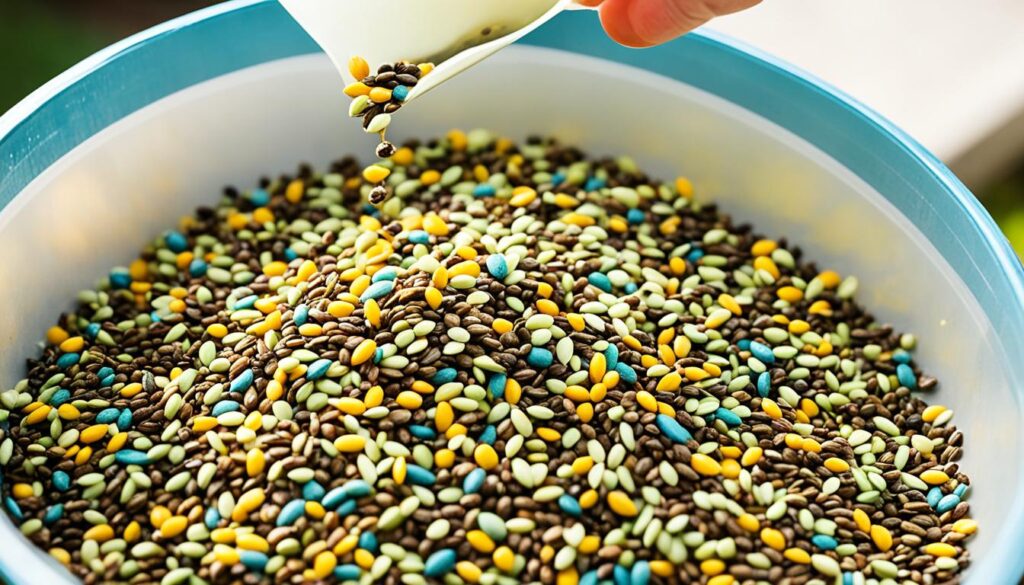
“Fresh, high-quality bird seed is the key to attracting and keeping a diverse array of backyard birds.”
By making sure your feeder has fresh, appealing bird seed, you’ll help create a welcoming space for your local birds. Remember, bird seed freshness is key to keeping your feathered friends coming back to your yard.
Location and Placement
Finding the perfect spot for your bird feeder is key to attracting birds. The location and placement of your feeder affect how safe and comfy birds feel. This can make them visit more often.
Think about noise levels when choosing where to put your feeder. If your yard is near a busy street or loud areas, pick a quieter spot. Birds don’t like loud noises and may not come to feeders in noisy places.
Finding a Quiet and Safe Spot
Try to put your bird feeder away from yard noise. Aim for a quiet bird feeder spot that’s protected from wind and easy for birds to see. This makes them feel safe and they’ll stay longer to eat.
- Put the feeder 10-15 feet away from places predators could hide, like bushes or tall grass.
- Hang the feeder 5 feet off the ground to keep out ground animals.
- Don’t put the feeder too close to windows to prevent bird crashes.
- Choose a spot that’s easy for you to refill and keep the feeder clean.
By thinking about the bird feeder placement and making a safe, quiet spot, you’ll draw more birds to your backyard.
Presence of Predators
Birds might avoid your feeder because of predators. They are cautious and won’t risk their lives for food if they feel threatened. Predators like raccoons, squirrels, chipmunks, and big birds can be a big danger to smaller birds.
Predator Types and Their Impact
Birds can be scared off by hawks, owls, or even a cat near the feeder. These predators can easily grab a bird, leaving your feeder empty. Ground predators like raccoons, squirrels, and chipmunks can also climb up to the feeder, making birds feel unsafe.
Deterring Predators from Your Feeder
- Make sure your feeder is at least 5 feet off the ground and on a strong structure that can’t be climbed.
- Put the feeder 10-12 feet away from any shelter, like trees or shrubs, to help birds escape.
- Think about using a feeder that closes when larger animals try to get to it.
- Install a baffle or cone under the feeder to stop climbing predators.
- Use motion-activated lights or sounds to scare away unwanted visitors.
Protecting your birds from predators makes your yard a safe place for them to visit. A little effort can help attract and keep a lively bird community in your backyard.
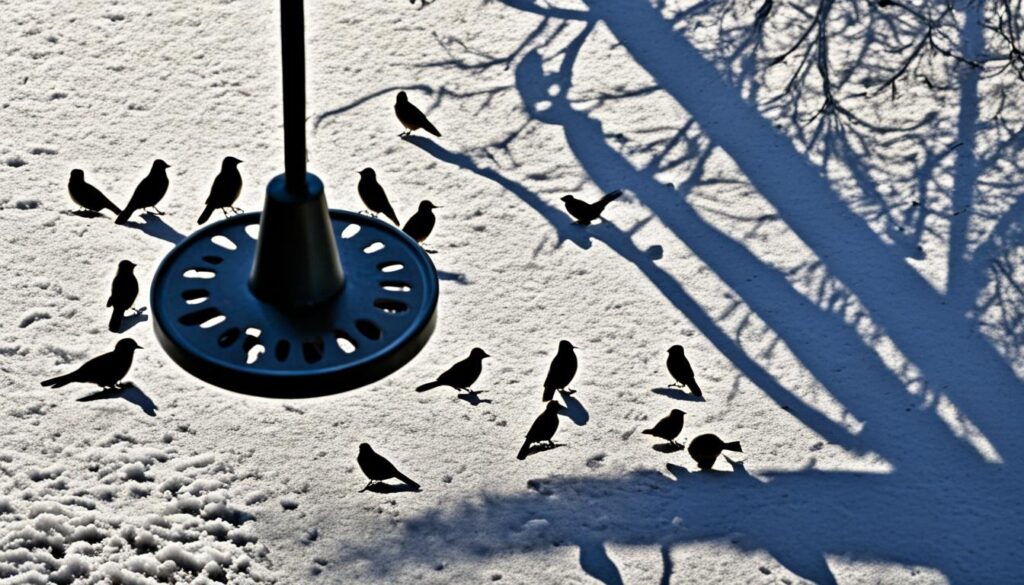
Why Aren’t Birds Coming to My Feeder?
If you’ve set up a bird feeder but birds aren’t visiting, you’re not alone. Many reasons can explain why birds might skip your feeder. Knowing these can help make your feeder more appealing to them.
One big reason is the seed’s freshness. Birds won’t eat old or spoiled seed. Always use fresh, high-quality bird seed in your feeder.
- Seed Shelf Life: Bird seed can spoil or mold quickly, especially in warm or humid weather. Always check the expiration date and store seed in a sealed container.
- Predator Presence: Birds may stay away if there are predators like cats, dogs, or squirrels around. Make sure your feeder is in a safe spot.
- Feeder Hygiene: Feeders that are dirty or not cleaned often can spread diseases. Clean your feeder with mild soap and water regularly.
Other things can also affect bird visits, like the seed type, feeder placement, and seasonal food changes. By fixing these reasons birds aren’t coming to feeders, you can make your yard more welcoming for birds.
“By understanding the common reasons birds aren’t coming to feeders, you can take steps to troubleshoot bird feeder issues and create a more attractive environment for your backyard birds.”
Natural Food Abundance
Many bird lovers notice fewer birds at their feeders in the warmer months. This happens because there’s more food for them in the wild. Birds prefer to eat the food they find outside, which means they visit feeders less often.
North America has lost one in four birds since the 1970s. This year, white pines had a mast year, producing lots of seeds. Because of this, many birds don’t need to come to feeders as much.
Seasonal Variations in Natural Food Sources
Species like red squirrels and chickadees love white pine seeds. They follow the food’s availability when choosing where to eat.
The FeederWatch program by the Cornell Lab tracks bird feeding patterns. It surveys birds from November to April in North America. This helps scientists understand where different birds live and eat throughout the year.
“Regularly replacing bird seed with fresh servings can appeal to birds, and changing seed mixes might deter certain bird species from visiting feeders.”
Even when there’s plenty of natural food, keep your feeder clean and try different seeds or places for it. This can help keep your backyard birds coming back.

Feeder Cleanliness and Hygiene
Keeping your bird feeder clean is key for your backyard birds’ health. A dirty feeder can have mold, bacteria, and other harmful stuff. This can spoil the seed and be bad for the birds.
The Audubon Society says to clean bird feeders once or twice a month. This keeps the food fresh and the feeder safe. When more birds come during migration, clean it every other week to stop diseases from spreading.
To clean your bird feeder, start by emptying it and taking it apart. Then, soak the parts in a weak bleach mix (1 part bleach to 9 or 10 parts water). Scrub it well, let it dry in the sun for a day or two, and refill it after that. Or, you can put the feeder parts in the dishwasher for a deep clean. Keeping your feeder clean helps your birds stay healthy.
Birds will quickly notice a clean feeder with fresh seed. They’ll start coming back within an hour of you filling it up. Keeping your feeders clean and full is a big help to your local birds.
“A reminder is set on the calendar for the first of each month to clean the feeders.”
Remember, keeping a bird feeder clean takes time and effort. It’s not something you can just forget about. Regular cleaning keeps your feeder a safe place for your birds to eat.
Weather Conditions
The weather greatly affects bird feeding patterns and feeder activity. Knowing how weather changes impact birds is key to keeping your bird population healthy. This knowledge helps you maintain a lively bird scene in your backyard.
In mild weather, birds might eat less from your feeders. They don’t need to burn as much energy to stay warm. Plus, they find plenty of food like insects naturally. So, you might see fewer birds at your feeders.
But, when it gets cold, birds eat more to stay warm. They depend on your feeders for high-calorie foods to survive. Heavy snow or ice also limits their natural food, making your feeders crucial.
Wet weather affects bird visits too. Rain or snow can keep birds away from your feeders as they look for shelter. But, after the weather clears, birds will come back to your feeders to eat and recharge.
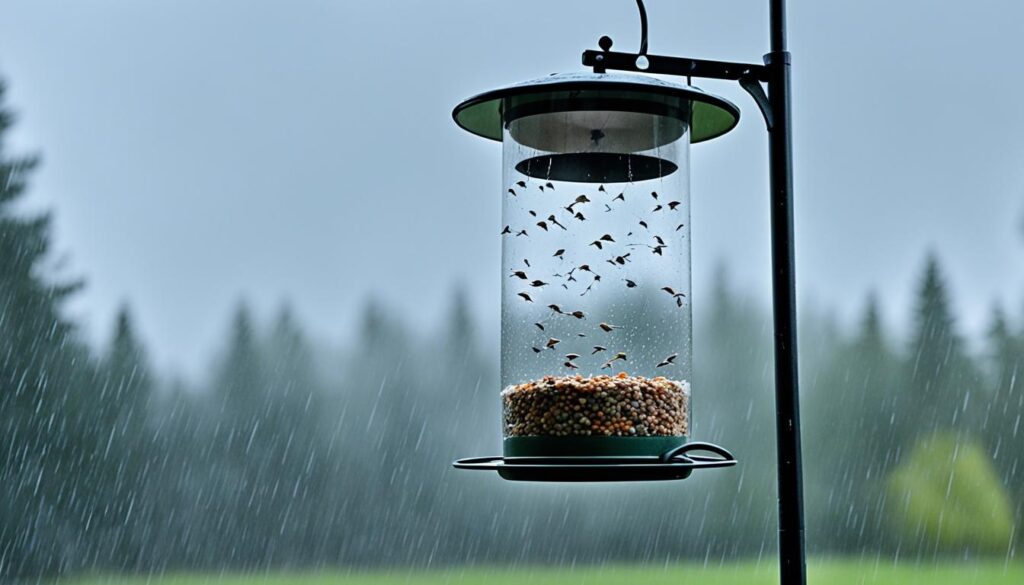
Weather effects on bird feeders vary by location and bird species. By watching and understanding weather impact on bird feeders and seasonal bird feeding patterns, you can make sure your backyard birds always have food. This way, you help them through the year.
Feeder Design and Functionality
Having well-designed and working bird feeders is key to drawing birds to your backyard. The types of bird feeders, their functionality, and picking the right one can really make a difference. It affects how often birds visit your outdoor space.
Choosing the Right Feeder for Your Backyard Birds
When picking a bird feeder for your yard, think about the birds you want to attract. Different birds like different feeders. For example, tube feeders are great for small birds like finches and chickadees. Larger birds like cardinals and jays prefer platform or tray feeders. Suet feeders attract woodpeckers and nuthatches.
Also, consider the bird feeder functionality. Make sure it’s easy for birds to get to the food and keeps out squirrels or big birds. Features like weight-sensitive perches or wire mesh guards can help.
It’s important to regularly clean your bird feeders to keep the food fresh and stop disease spread. With the right types of bird feeders and setup, you’ll create a spot that birds will love to visit.
Bird Migration Patterns
As seasons change, bird migration patterns affect your backyard feeder. Many birds like warblers and orioles leave quickly. But, birds like blackbirds and native sparrows come and go at their own pace.
Facultative migrants change their paths based on food availability. Weather and food changes shape their journeys.
- Weather like droughts, floods, or heat waves makes birds move to better places.
- Changes in predators can push birds to safer areas.
- Removing trees or clearing land changes the bird types and numbers around.
Citizen science projects like eBird and NestWatch track bird populations and migration. They offer insights into where birds might be during their moves.
“Bird feeders can actually be beneficial for migrating birds by providing energy-rich foods to help them gain weight quickly. Some bird species may double their weight before migration begins.”
Bird migration is mainly driven by the changing photoperiod (daily sunlight). Knowing what affects seasonal bird activity and bird feeding patterns can make your yard more welcoming for birds.
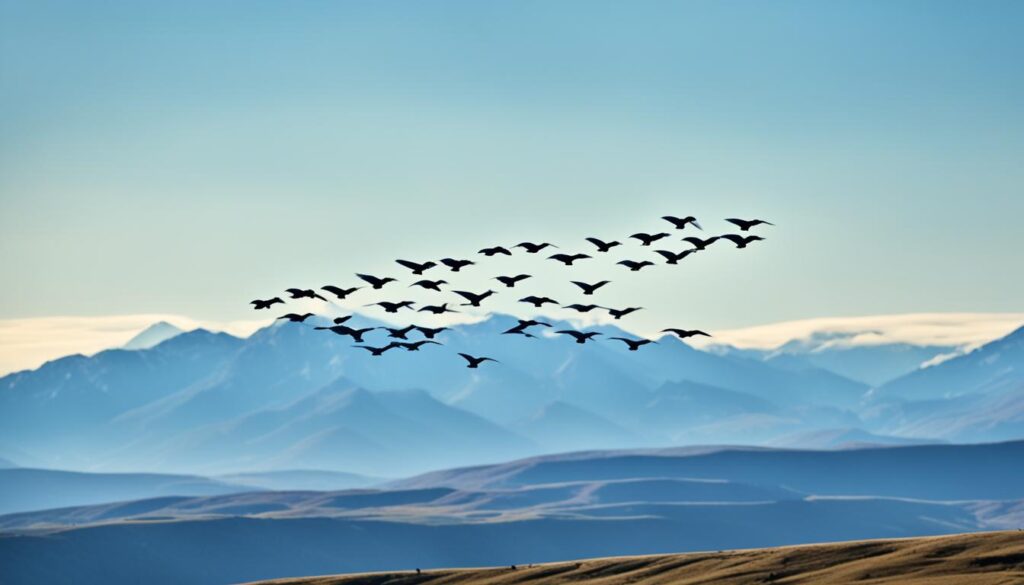
Establishing Trust and Familiarity
If you’re new to bird ownership or have just set up a feeder, you might notice birds are slow to come near. This is normal. Birds are cautious of new things in their world. They need time to check out your feeder and see if it’s safe.
Building trust with birds is key to getting them to visit your feeder. Birds are careful because they’re at the bottom of the food chain. They want to be sure it’s safe before they start coming by often. With patience, they’ll get used to your feeder.
To help birds get comfortable with your feeder, try these tips:
- Start Slow: Put the feeder in a quiet spot in your yard. This makes birds feel safer as they approach it.
- Be Consistent: Always have fresh, high-quality bird seed in the feeder. Refill it regularly. This makes birds see the feeder as a steady food spot.
- Observe and Adjust: Watch how birds act around the feeder. If they’re shy, try moving it or changing the seed type to see what they like.
- Patience is Key: Building trust takes time. It might take weeks or months for birds to fully accept your feeder. Keep at it, and they’ll learn it’s safe and reliable.
By taking these steps and letting birds get to know your feeder, you can build trust. This leads to a happy bird population in your backyard.
“Positive reinforcement creates trust and builds relationships with animals, including parrots.” – Maddy Butcher and Dr. Steve Peters
Varying Bird Seed Types
Offering different bird seed types can really help attract more birds to your yard. By mixing various seed blends, you meet the unique tastes of different birds. This makes your feeder a go-to spot for their meals.
Offering a Variety of Seed Blends
Sunflower seeds are a top choice for many birds because they’re high in fat. Safflower seeds are great for cardinals, grosbeaks, chickadees, doves, and sparrows. Nyjer seeds are perfect for small finches like American Goldfinches and Common Redpolls.
Ground-feeding birds like quails and cardinals love white proso millet. Corn is eaten by many birds but watch out for aflatoxin. Peanuts are a hit with jays and chickadees, but they might also draw squirrels.
Using a mix of bird seed types not only meets different bird needs but also reduces waste. Seeds like red millet and rapeseed are often ignored, so a balanced mix is best. This way, you’ll attract a variety of birds without wasting seeds.
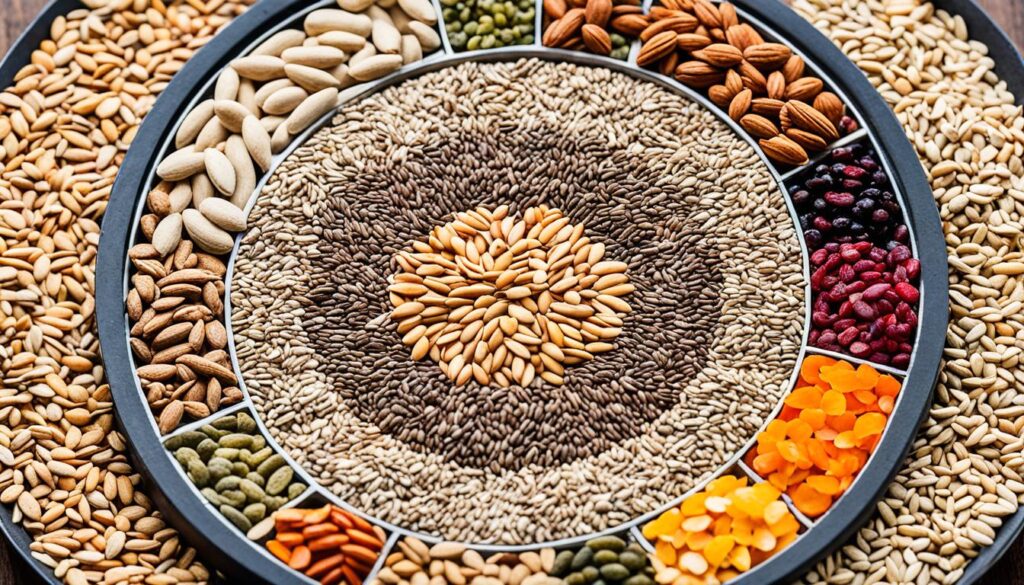
“Offering a variety of bird seed types is like creating a diverse menu for your feathered guests – it ensures there’s something to satisfy every palate and encourage a wider range of species to visit your backyard oasis.”
Supplementing with Water Sources
Adding a birdbath or other water features can really help attract birds to your yard. It gives them a place to get a drink or take a bath. Studies show that giving birds water can actually help their populations grow.
Birds often look for extra water sources, unlike squirrels which might eat more from feeders. By offering clean water, you help songbirds in your yard. This makes your backyard a better place for them.
Having different types of water sources is a good idea. Think about using pot saucers, ceramic birdbaths, metal dishes, and hummingbird feeder wells. Put them in places that are shady but open, so birds can safely drink and bathe.
“Having a variety of water sources is crucial for wildlife in urban areas. I have over a dozen water sources in my intown Atlanta yard, and it’s amazing to see the interactions between the different species that come to drink and bathe.”
It’s important to keep these water sources clean. Clean and refill them every week or so to stop diseases from spreading. This helps keep the birds healthy when they visit your yard.
By giving water for birds, adding birdbaths, and attracting birds with water, you’ll see more life in your backyard. You’ll also help the local bird population. It’s a great way to connect with nature and help birds.
Patience and Perseverance
Attracting birds to your backyard feeder can be rewarding but also challenging. The key is to be patient and keep trying. With consistent bird feeding, you can make your backyard a welcoming place for birds.
Being patient is crucial when attracting birds. It might take time for them to find your feeder and start visiting often. Don’t get discouraged if you don’t see birds right away. Make sure your feeder is safe, easy to get to, has fresh seed, and is protected from predators.
- Try scattering a bit of seed on the ground to attract birds, but watch out for squirrels.
- Keep your feeder clean to keep the seed fresh and the area inviting.
- Try different seed types and feeder designs to see what birds like best.
With persistence and consistent bird feeding, more birds will come to your backyard. Building trust and familiarity takes time, but it’s worth it to watch these beautiful birds up close.
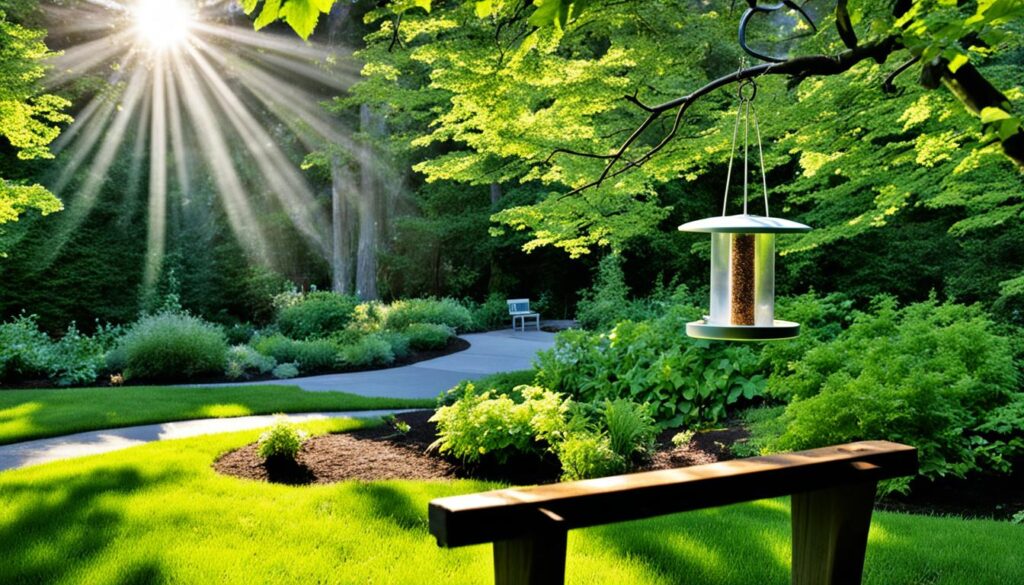
“The love of feeding the birds is one of the most satisfying hobbies I know. It’s a way to enjoy nature’s beauty and bring a sense of wonder to your backyard.”
– Joanie Van Clief, avid birdwatcher
Conclusion
Understanding why birds might not visit your feeder can help you make your space more welcoming. Make sure the seed is fresh and of high quality. Also, place your feeder in a spot that’s safe from predators and keep it clean.
Being patient and persistent is important for a great bird feeding experience. With some effort, you can turn your yard into a bird paradise. This means birds will get the food and safety they need to live well.
Whether you love birds or are just starting to enjoy backyard birding, knowing what birds like can make a big difference. Keep learning and adjusting your setup to help your local bird friends. This way, you’ll become a key supporter of the birds in your area.
FAQ
Why aren’t birds coming to my new bird feeder?
Birds might not visit your feeder for several reasons. It could be because it’s new and they don’t know it’s there. Or, the feeder might be empty or have old, spoiled food. Predators, wrong feeder placement, or the type of seed used could also be the issue.
How can I attract more birds to my existing bird feeder?
To get more birds to your feeder, make sure the seed is fresh and of high quality. Put the feeder in a quiet spot away from predators. Offering different seed types can attract various bird species. Keeping the feeder clean is also key.
Why have birds stopped visiting my bird feeder recently?
Birds might not visit your feeder as much for a few reasons. They might find more food naturally in warmer months. The feeder could be too close to loud noises or predators. Or, it might need cleaning and fresh seed.
How do I deter predators from my bird feeder?
To keep predators away, hang your feeder at least 5 feet off the ground and 10-12 feet from trees or shrubs. Use feeders designed to be predator-proof. Place the feeder so birds can easily escape.
What type of bird seed should I use to attract the most birds?
Use a mix of high-quality bird seed types like sunflower seeds, nyjer, millet, and cracked corn. This mix will attract many bird species. Change the seed types based on the birds in your area.
How often should I clean my bird feeder?
Clean your bird feeder at least once a month, or more if it gets dirty or the seed goes moldy. This keeps the food fresh and stops diseases from spreading among the birds.
Do birds still visit feeders during the summer months?
Yes, birds will still visit feeders all year, but they might not come as much in summer when there’s more natural food. Changing the seed types and keeping the feeder clean can help keep birds coming all year.
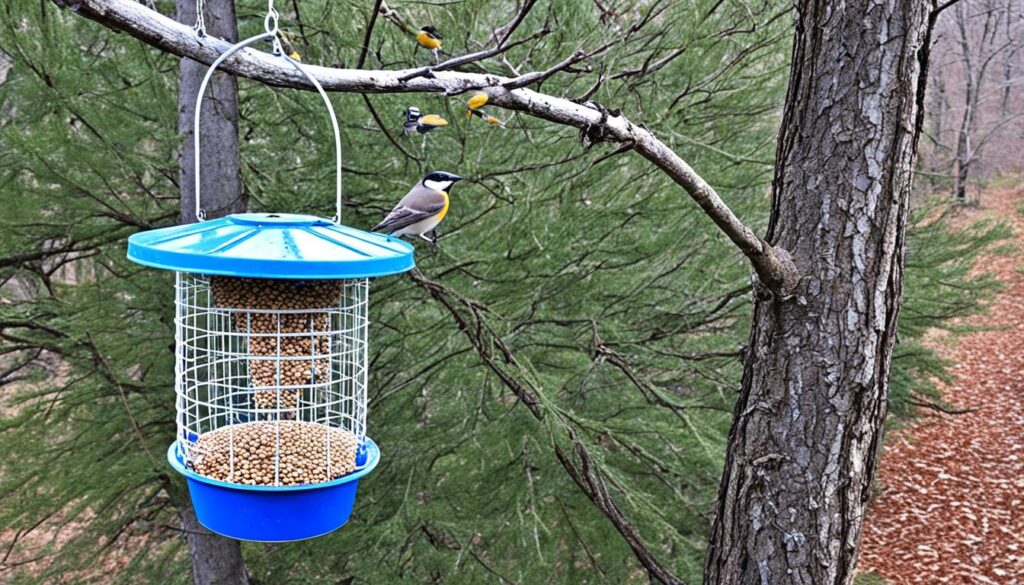

перепродажа аккаунтов площадка для продажи аккаунтов
профиль с подписчиками аккаунты с балансом
продать аккаунт платформа для покупки аккаунтов
купить аккаунт ploshadka-prodazha-akkauntov.ru/
продать аккаунт маркетплейс аккаунтов
купить аккаунт продажа аккаунтов
покупка аккаунтов маркетплейс аккаунтов соцсетей
Online Account Store Sell accounts
Account Purchase Website for Buying Accounts
Account Trading Platform Buy and Sell Accounts
Ready-Made Accounts for Sale Sell Account
Account Trading Platform Account exchange
Account Trading Service Account Selling Platform
Account Buying Platform Account Catalog
Account Selling Platform Account market
Sell Account Guaranteed Accounts
Account Purchase Guaranteed Accounts
Account Trading Platform Account exchange
website for selling accounts account selling service
sell account account catalog
buy and sell accounts accounts for sale
account trading account purchase
account selling platform find accounts for sale
verified accounts for sale account trading platform
buy account guaranteed accounts
sell accounts account market
account store buy accounts
account purchase account catalog
account trading account sale
account selling platform purchase ready-made accounts
sell pre-made account accounts market
website for selling accounts accounts market
secure account sales guaranteed accounts
buy and sell accounts account trading service
accounts for sale account marketplace
sell pre-made account guaranteed accounts
account purchase buy pre-made account
account catalog https://account-buy.org
database of accounts for sale account trading platform
profitable account sales accounts for sale
account buying platform marketplace for ready-made accounts
account trading social media account marketplace
account trading account trading
accounts market purchase ready-made accounts
sell pre-made account account exchange service
account market account marketplace
account catalog https://accounts-offer.org/
buy and sell accounts buy accounts
find accounts for sale https://buy-best-accounts.org
account marketplace https://accounts-marketplace.live
account buying service https://social-accounts-marketplace.xyz
account sale https://buy-accounts.space/
account buying service https://buy-accounts-shop.pro/
accounts market buy accounts
accounts marketplace https://social-accounts-marketplace.live
buy accounts https://buy-accounts.live
buy and sell accounts accounts market
website for selling accounts https://accounts-marketplace-best.pro
купить аккаунт https://akkaunty-na-prodazhu.pro
маркетплейс аккаунтов купить аккаунт
продать аккаунт https://kupit-akkaunt.xyz/
маркетплейс аккаунтов маркетплейсов аккаунтов
биржа аккаунтов https://akkaunty-market.live/
продать аккаунт kupit-akkaunty-market.xyz
маркетплейс аккаунтов купить аккаунт
биржа аккаунтов https://online-akkaunty-magazin.xyz
биржа аккаунтов akkaunty-dlya-prodazhi.pro
магазин аккаунтов kupit-akkaunt.online
buying facebook accounts https://buy-adsaccounts.work
buy aged facebook ads account https://buy-ad-accounts.click
buy fb account https://buy-ad-account.top/
buy fb account facebook ad account for sale
buy facebook ad account ad-account-buy.top
buy facebook account for ads buy facebook ads manager
cheap facebook account https://ad-account-for-sale.top
buy facebook profiles buy aged facebook ads accounts
buy fb account https://ad-accounts-for-sale.work
buy google ads threshold account https://buy-ads-account.top
google ads account buy https://buy-ads-accounts.click
buy facebook profiles buy facebook ads account
buy google ads verified account https://ads-account-for-sale.top
buy google ads https://ads-account-buy.work
google ads reseller buy aged google ads account
buy google ads https://buy-account-ads.work
buy google ads threshold accounts https://buy-ads-agency-account.top/
buy google ad account https://sell-ads-account.click/